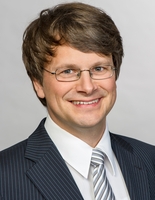Prof. Dr. rer. nat. Bastian Märkisch

- Telefon
- +49 89 289-14485
- Raum
- 269
- maerkisch@ph.tum.de
- Links
-
Homepage
Visitenkarte in TUMonline
- Arbeitsgruppe
- Elementarteilchenphysik bei niedrigen Energien
- Funktion
- Professur für Elementarteilchenphysik bei niedrigen Energien